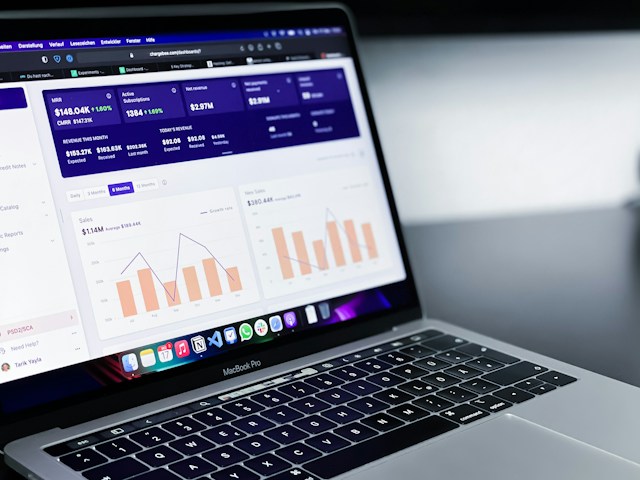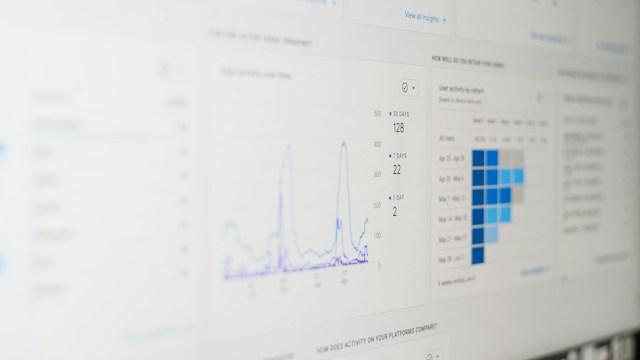Predictive Modeling in Social Media Analytics

In the rapidly evolving world of technology, one tool stands out as a game-changer: predictive modeling. This computational marvel is taking social media analytics by a storm, revolutionizing how we forecast trends and strategize in the virtual world. But what exactly is predictive modeling, and how does it help us peer into the future of social media trends? Let’s delve into this fascinating topic.
“Predictive modeling is an algorithmic way of predicting future outcomes based on historical and existing data. It’s like having a magic crystal ball, only this one is powered by data and advanced algorithms.”
Imagine harnessing this power to predict trends on social media platforms? Predictive modeling in social media analytics, simply put, allows us to anticipate the wave of the future, giving us invaluable insights on what could potentially ‘trend’. This can shape everything from marketing campaigns to influencers’ content, and even significant social movements. Intrigued? Buckle up, and let’s explore the massive potential of predictive modeling in social media analytics.
Table of Contents
How to use predictive modeling for forecasting social media trends?
Start by gathering a substantial amount of historical data from your chosen social media platform. This could be Twitter, Facebook, Instagram, or any other platform that’s pertinent to your target audience. Now, isn’t that incredibly exciting?
Not so fast! It’s important to remember that you’re not just gathering any kind of information, but rather data that can directly impact your organization or business. This data might include user engagement, likes, shares, comments, and posts among others. Spend some time carefully selecting your data, think of it like meticulously picking ripe fruit.
Next, clean up your data. While this might seem like a daunting task, it’s more akin to weeding a garden. You’re removing outliers, duplicates or irrelevant information. This is essential to get accurate results from your predictive model.
Now, let’s create the predictive model. Use machine learning algorithms like Linear Regression, Decision Tree or Time Series to train your model. A model can be thought of as a busy bee, gathering insights from the raw, messy data (nectar) and transforming it into something meaningful (honey).
Finally, test and observe your model. The real value lies in your model’s ability to forecast future trends. Remember, a good predictive model foretells the trends, not just merely imitates the past. It’s not a mirror, but a crystal ball!
A word to the wise: Don’t set your expectations too high initially. Predictive modeling is more than creating a perfect forecast from day one. There’s a lot of tweaking, changing, and refining involved, making this process more of an art than a science. So arise, grab your digital paintbrush, and let this incredible technology be your canvas!
What is predictive modeling in social media analytics?
Predictive modeling is a statistical technique used to forecast future activities, behaviors, and trends using historical and current data. However, when we talk about predictive modeling in reference to social media analytics, it takes a slightly different and interesting turn.
Picture this: Each day, billions of individuals worldwide interact, share, and like content on various social media platforms. All these interactions generate substantial data, sometimes referred to as ‘social data.’ This data is a valuable resource for gaining insights and understanding user behavior or trends on social media platforms. Predictive modeling in social media analytics involves using this social data to predict future actions, trends, or behaviors on social media platforms.
Imagine being able to anticipate a surge in interest for a specific product or predicting the potential viral content before it happens. That’s the remarkable power of predictive modeling in social media analytics. It uses techniques such as machine learning, data mining, and artificial intelligence to analyze and interpret social data and use what it has learned to make accurate predictions.
In layman’s terms, predictive modeling learns from the past to tell us about the future. It sifts through tons of social data, finds and analyzes patterns, and then uses this analysis to predict future trends or behaviors. It’s like a crystal ball, but backed with facts, figures, and AI.
Benefits of using predictive modeling in social media analytics
So, you’re probably asking yourself now, why should I consider predictive modeling for my social media campaigns? Well, there are numerous benefits that can be derived from employing this model in your social media strategies. Let’s discuss some of them in detail to help you gain a comprehensive understanding of its profound impact.
First off, predictive modeling empowers you to make accurate projections of future social media trends. With sharp predictions, you are often ahead of the game, better planning your strategies and adjusting your content to sync with predicted trends. This effectively increases the reach, resonance, and relevance of your campaigns, helping your brand stay in tune with the rapidly evolving social media landscape.
Secondly, using predictive modeling paves the way to cost-effective content optimization. By gaining insights into what content is likely to perform well in the future, you can focus your resources in the right direction. You won’t waste energy on content that isn’t expected to generate significant engagement, effectively making your social media investments more profitable.
A little more futuristic, predictive modeling can be the means to achieving persona-specific targeting. This model allows you to forecast which demographics will likely interact with your content. This way, you’re not only reaching people but reaching the right people. The result? More tangible engagements, increased conversions, and a happier social media community.
Lastly, predictive modeling in social media analytics promotes data-driven decision making. Decisions made based on data are often more strategic, more precise, and yield higher success rates. So now, imagine combining these data-informed decisions with the forward-looking nature of predictive analytics? It’s like arming yourself with a social media crystal ball!
In conclusion, predictive modeling isn’t just a fancy term in the social media analytics world – it’s a precious tool enabling brands to plan strategically, optimize their efforts, and monetize their content intelligently. The digital world is growing and evolving at a fast pace, and to keep up, you need tools like these on your side.
Reference : https://www.techtarget.com/searchbusinessanalytics/definition/social-media-analytics




